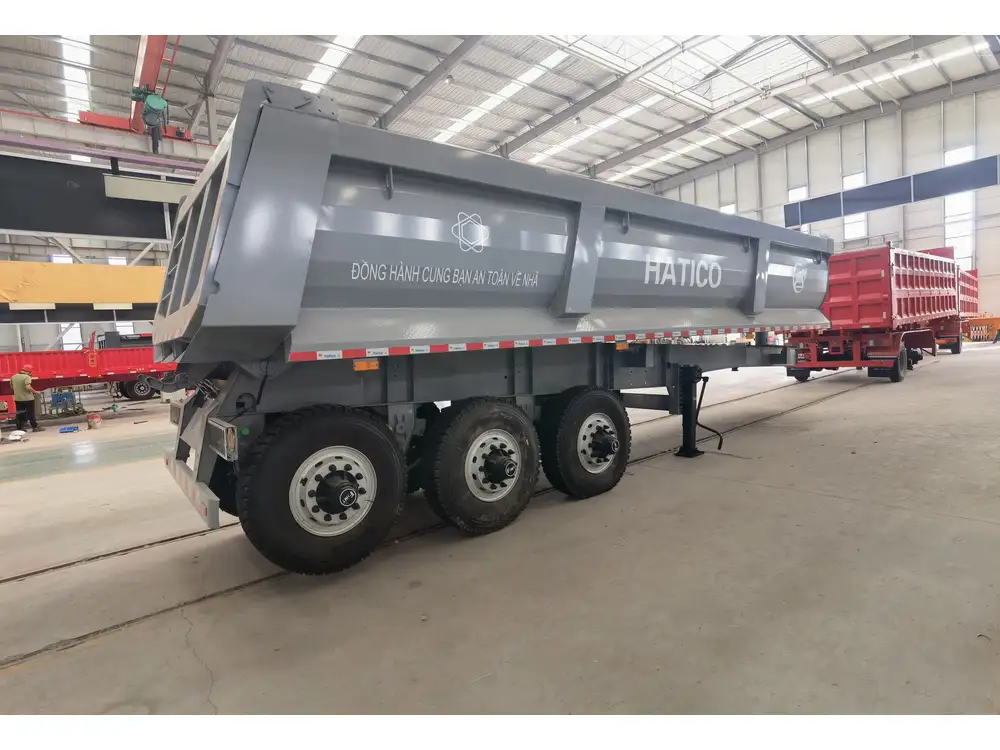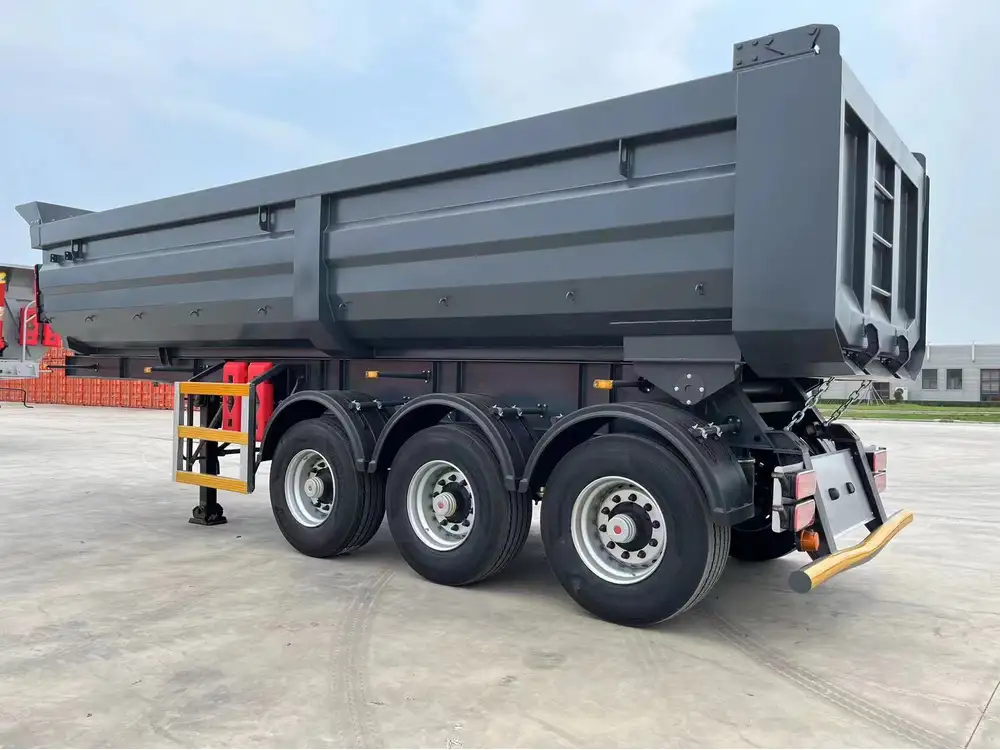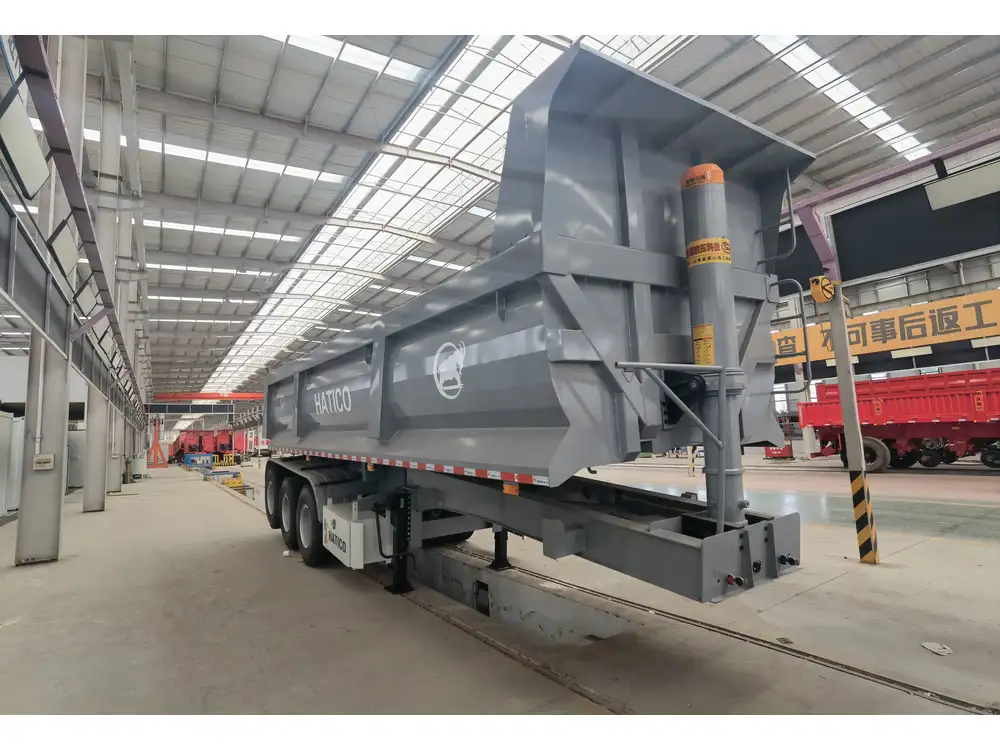When it comes to transporting bulk lime, choosing the right semi-trailer is crucial for efficiency, safety, and cost-effectiveness. Lime, being a vital component in various industries, including agriculture, construction, and environmental remediation, requires specific handling and transport solutions that can adapt to its unique properties. This guide is designed to provide comprehensive insights into selecting the best semi-trailer for hauling bulk lime, incorporating essential factors, types of trailers, comparisons, and expert recommendations.
Understanding Bulk Lime: Properties and Transportation Requirements
Before delving into trailer specifications, it’s essential to understand the nature of bulk lime. Lime is a product derived from limestone, primarily used in soil stabilization, water treatment, and as a construction material. It is commonly found in two forms:
- Quicklime (Calcium Oxide): Produced by heating limestone, it is dry and reactive.
- Hydrated Lime (Calcium Hydroxide): Obtained by adding water to quicklime, resulting in a powdery substance.
Key Considerations for Trailer Selection
When hauling bulk lime, several factors influence the choice of semi-trailer:
| Factor | Importance |
|---|---|
| Material Type | Quicklime vs. hydrated lime requires different handling strategies and trailer designs. |
| Load Capacity | The trailer should meet or exceed the weight limits dictated by local regulations, considering the density of lime. |
| Discharge Mechanism | Efficient unloading procedures through gravity or pneumatic systems enhance operational efficiency. |
| Durability and Construction | Trailers must withstand the corrosive properties of lime, especially when dealing with quicklime. |
| Aerodynamics & Fuel Efficiency | A well-designed trailer should minimize drag, improving fuel efficiency during transport. |

Common Transport Challenges
- Dust Generation: Hauling dry lime can create dust, necessitating trailers that minimize spillage and contain emissions.
- Moisture Absorption: Hydrated lime can absorb moisture; thus, trailers must be designed to protect the load from environmental conditions.
- Temperature Sensitivity: Depending on the lime, extreme temperatures might cause changes in material properties, affecting transport strategies.
Types of Semi-Trailers for Hauling Bulk Lime
There are several trailer types that are particularly effective for hauling bulk lime. Each offers distinct advantages based on specific operation needs.
1. Walking Floor Trailers

Advantages:
- Hydraulic Mechanism: These trailers feature a moving floor system that allows for continuous unloading of bulk materials without tipping.
- Versatile Load Types: Ideal for both quicklime and hydrated lime, ensuring smooth discharge without generating excessive dust.
Ideal Use Cases:
- Operations requiring rapid unloading times, particularly in environments where time constraints are critical.
2. End Dump Trailers

Advantages:
- High Capacity: Typically offers large load capacities suited for heavy bulk lime transportation.
- Gravity Discharge: Takes advantage of gravity for unloading, minimizing material handling time.
Ideal Use Cases:
- Construction sites where immediate unloading at the destination is beneficial.
3. Pneumatic Tankers

Advantages:
- Dust-Free Transport: Features a sealed system that minimizes dust exposure during transport.
- Controlled Discharge: Pneumatic discharge systems allow precision in unloading, reducing environmental impact.
Ideal Use Cases:
- Carrying hydrated lime where moisture intrusion and dust eradication are necessary.
4. Tipping Trailers

Advantages:
- Flexibility: Can unload on the side or rear, providing options depending on site requirements.
- Robust Structure: Designed for heavy loads, making them suitable for bulk lime transportation.
Ideal Use Cases:
- When unloading flexibility is paramount, particularly in tight or uneven locations.
Comparison Table of Semi-Trailer Types
| Trailer Type | Load Capacity | Discharge Method | Best For | Dust Control |
|---|---|---|---|---|
| Walking Floor | Medium to High | Hydraulic moving floor | Continuous operation | Moderate |
| End Dump | High | Gravity discharge | Construction sites that need quick unloading | Low |
| Pneumatic Tanker | Medium | Pneumatic discharge | Environments requiring dust control | High |
| Tipping Trailer | High | Rear or side tipping | Sites needing unloading flexibility | Moderate |

Factors Influencing Operational Efficiency
Material Handling and Maintenance
Proper maintenance of the semi-trailer contributes significantly to its lifespan and operational efficiency. Here are key maintenance tasks to consider:
- Regular Inspections: Ensure that the trailer’s structure and discharge mechanisms function optimally.
- Corrosion Protection: Given lime’s corrosive nature, applying protective coatings can extend a trailer’s operational life.
- Cleaning Protocols: Establish protocols for cleaning trailers after transporting lime to prevent material build-up and potential cross-contamination with other freight.
Load Distribution and Safety Regulations
Understanding local and national weight limits is essential. Overloading the trailer can lead to safety hazards, including:
- Reduced braking capability
- Increased wear on tires and suspension systems
- Legal ramifications and fines
To ensure compliance, utilize advanced load distribution systems that help in even weight distribution across the axles.

Choosing the Right Manufacturer
Key Considerations in Selecting a Trailer Manufacturer
Opting for a reputable manufacturer is imperative for securing a durable and efficient semi-trailer. Factors to consider:
- Reputation and Reliability: Research user reviews and case studies to gauge a manufacturer’s track record.
- Customization Options: The ability to customize trailers according to specific needs enhances usability and efficiency.
- After-Sales Support: Manufacturers offering robust after-sales support ensure continuous operational efficiency.
Recommended Manufacturers for Bulk Lime Trailers
Here are some manufacturers that have earned acclaim in the industry:
| Manufacturer | Specialization | Notable Features |
|---|---|---|
| Wabash National | Walking Floor Trailers | Offers industry-leading cargo solutions with customization options. |
| Trailmobile | Pneumatic Tankers | Known for high-quality pneumatic systems ensuring dust control. |
| East Manufacturing | Tipping and End Dump Trailers | Specializes in lightweight, durable materials for heavy load hauls. |

Conclusion: Making an Informed Decision
Selecting the best semi-trailer for hauling bulk lime involves critical evaluation of various factors, including material properties, discharge mechanisms, and maintenance protocols. By thoroughly understanding the requirements and challenges of bulk lime transportation, coupled with insights into the various types of trailers available, stakeholders can make informed decisions that increase operational efficiency and lower costs.
The right trailer not only enhances productivity but also ensures compliance with safety regulations, ultimately supporting sustainable and efficient practices within the lime transport industry. Understanding the nuances of each trailer type and aligning them with operational needs will empower operators to optimize their logistics processes, deliver exceptional service, and respond dynamically to changing market demands.
Investing time and resources into this critical decision is essential for achieving long-term success in the competitive landscape of bulk lime transportation.



